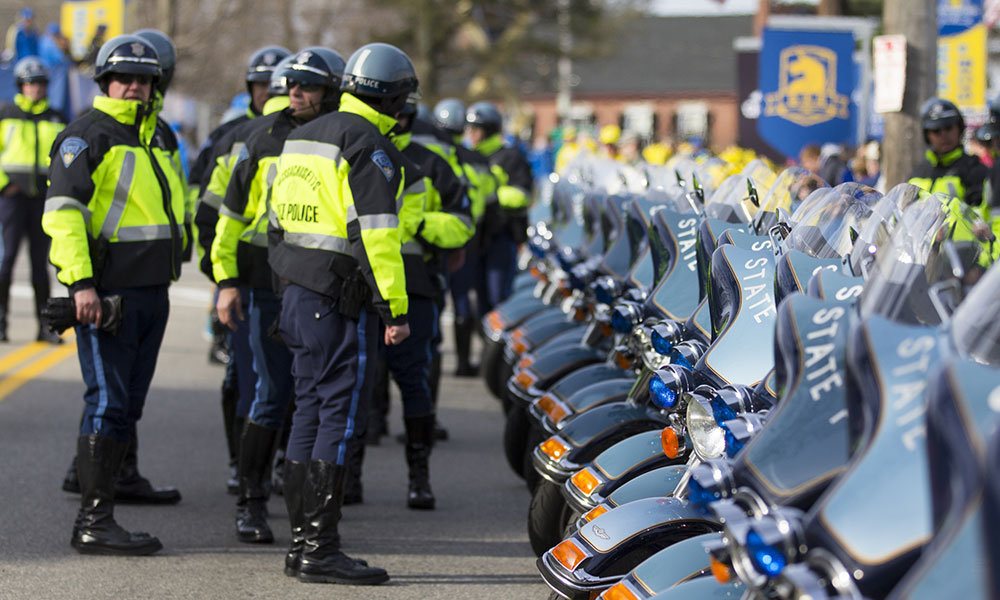
How the Boston Athletic Association Plans to Keep the Marathon Safe in 2014
A year after the deadly bombings at the Boston Marathon shook the city to its core, the Boston Athletic Association is taking steps to boost security at the foot race. Not every change has been well received, however.
With this year’s Boston Marathon—and the one-year anniversary of last year’s bombing and the manhunt that followed—quickly approaching, questions of security are front-of-mind concerns for organizers of the annual foot race.
The Boston Athletic Association, the group that puts on the marathon each year, is trying to ensure a more secure environment a year after a tragedy that shook the city to its core. Among its efforts:
A boost in security: BAA is working with city officials to tighten security in multiple forms, including limiting the kinds of items people can bring into the area along the route (backpacks, which were used in last year’s attack, are “discouraged”) and increasing the number of security checkpoints. “The primary goal is to preserve the traditional feel and character of the Boston Marathon,” Massachusetts Emergency Management Agency Director Kurt Schwartz told ESPN.com. “Our safety and security plan accomplishes this goal.” Officials are also asking the public to be vigilant in reporting potential threats at the event.
Telling walk-on runners to back off: One change that could affect the fabric of the race this year is a ban on so-called bandits, or unauthorized runners, from the course. Safety and already high registration numbers—36,000 people are signed up to run this year—were cited as reasons. “We are aware that many people want to participate in some way in this year’s Boston Marathon as a display of support,” BAA wrote on its website, “but we ask that those who are not official participants to refrain from entering the course for the safety of the runners and themselves.” (BAA recently launched its Boston Marathon World Run app to help runners who can’t race get involved with the marathon in a different way.)
Missing marchers: The decision to prohibit walk-ons doesn’t bode well for one noted set of unofficial participants, the “ruck marchers,” active members of the military or ROTC who march the marathon course in honor of soldiers who have died in battle. Many ruck marchers were first responders during last year’s bombing, but the ban at this point appears to include them. “My first reaction was of course disappointment, but I understand that there are safety and security concerns,” Tough Ruck founder and National Guardsman Stephen Fiola told UPI. “We knew that there were concerns, but we did not know that a policy was going to come out prior to the BAA announcement.” The group worked out a deal with the National Park Service to hold a similar march two days before the marathon, though along a different route. BAA did leave the door open to having members of the military take part during the marathon, however.
A full list of rule changes is available on the BAA website.
Police officials, shown prior to last year's attack at the Boston Marathon. (iStock Editorial/Thinkstock)






Comments